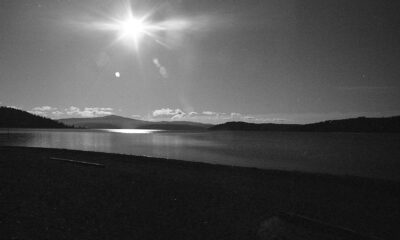In 1966, William B. McFarland, former city attorney of Coeur d’Alene, took the time to put pen to paper to describe for his family life in the early years of our fair city. He was born in 1887, the year Coeur d’Alene was organized as a village. The following is an excerpt from his reflections.”
– Helen A. McFarland, Staff Contributor
The Fort was established in 1876, first as Fort Coeur d’Alene, and it was later named in honor of General William T. Sherman of Civil War fame; he commanded the Union forces that invaded the deep South; the army that made the famous march from Atlanta to the sea.
The last troops of the Fort were colored troops which, I understand, replaced the white troops ordered elsewhere at the beginning or during the Spanish-American War. The Fort was closed in the year 1901 and the property was sold by the government to people who later platted the ground in city lots as Sherman Park, Forest Heights, etc. Many of the old structures are still there. Officer’s Row now constitutes apartment houses. The little chapel still remains and is preserved by the public as a memorial.
The Mullan Trail was surveyed in 1861 by Captain Mullan as a road connecting Fort Benton in Montana with Fort Walla Walla. Thus Fort Sherman became on of a chain of forts. The cannon on the parade grounds was discharged in the morning and in the evening. The military exercises, reviews, retreats, etc., were often attended by the citizens of the town and were a source of pleasure and inspiration to the town people.
The guard-house was situated at the end of what is now Mullan Road, which is the street abutted by the City Park on the south and memorial Field on the north.
The entrance gate to the Fort was a thing of beauty, surmounted by an eagle with out-stretched wings. Just inside of the gate and to the left was the guard-house. Guards were always stationed at the gate to challenge anyone who approached. However, permission to enter was generally granted.
Baseball teams were formed from the personnel of the soldiers and we boys enjoyed the ball games held on the parade grounds.
Fort Sherman was one of the last forts of those established to protect the early settlers from Indian attacks, to be vacated. With the ending of these forts it can be said, there ended the pioneer days and with them departed much of the glamour and romance of the Old West.
The Colonel’s residence was out in front of the parade grounds, and was the house nearest to and fronting upon the lake. This house was torn down just a few years ago and is now occupied by modern houses. It had been, for many years after the abandonment of the Fort, used as a residence by Thomas T. Kerl, one of those who platted Sherman Park.
The old town was quite lively on the night that the soldiers received their pay, and was the scene of many lively encounters between the soldiers and the more boisterous men of the town. On these occasions the women of the town preferred to stay at home and off of Sherman Avenue. However, nothing of a serious nature ever developed.
I was seven years old when the great flood of 1894 occurred. The water of the lake inundated the Fort Grounds. Men got out of the second floor of their barracks into row boats. I saw soldiers rowing boats on Mullan road to a point where the railroad tracks are now located. In December of 1933 the Fort Grounds were again threatened by high water, but now dikes have been built and a sea wall constructed, all calculated to prevent any such further occurrence.
-A fine junior college and many fine residences now occupy the ground that was once Fort Sherman.

















